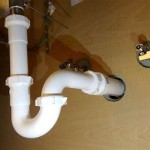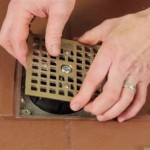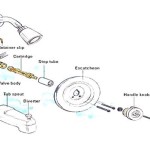Installing a Bathroom Exhaust Fan Roof Ventilator
A bathroom exhaust fan is essential for removing moisture, odors, and pollutants from your bathroom. Installing a roof ventilator for your bathroom exhaust fan can significantly improve its effectiveness, providing better ventilation and reducing the risk of mold and mildew growth. This article will guide you through the process of installing a bathroom exhaust fan roof ventilator, providing step-by-step instructions and important considerations to ensure a successful installation.
Choosing the Right Roof Ventilator
The first step is to choose the right roof ventilator for your bathroom exhaust fan. Consider factors such as:
- Size: The ventilator should be large enough to handle the exhaust volume of your bathroom fan.
- Material: Roof ventilators are typically made of ABS plastic, metal, or a combination of both. Choose a material that is durable and weather-resistant.
- Style: There are various styles of roof ventilators available, including low-profile, dome-shaped, and turbine-style. Choose a style that complements the design of your roof.
- Features: Some roof ventilators come with additional features such as built-in insect screens, rain guards, and adjustable dampers.
Preparing for Installation
Before beginning the installation, gather the necessary materials and tools, and take the following steps:
- Check local building codes: Ensure the installation complies with local building codes and regulations.
- Locate the roof vent location: Determine the best spot on your roof for the ventilator, considering factors like slope, proximity to the bathroom fan, and potential obstructions.
- Measure the roof opening: Measure the diameter of the ventilator’s base to determine the size of the hole that needs to be cut into the roof.
- Prepare the roof surface: Ensure the roof surface is clean and dry, and remove any existing shingles or flashing around the chosen location.
Installing the Roof Ventilator
Once the preparation is complete, you can start with the installation process.
- Cut the roof opening: Use a circular saw or a roofing hole saw to cut the opening in the roof, making sure it matches the diameter of the ventilator’s base.
- Install the flashing: Install the flashing around the roof opening, ensuring a watertight seal. The flashing should be installed according to the manufacturer’s instructions and sealed with roofing cement.
- Attach the ventilator: Secure the ventilator to the roof using screws or nails, ensuring a tight and secure fit. Refer to the manufacturer’s instructions for recommended fastening methods.
- Connect the exhaust pipe: Connect the bathroom exhaust fan’s ductwork to the ventilator’s intake opening. Secure the connection with duct tape or clamps to ensure a tight seal.
- Test the exhaust fan: Turn the exhaust fan on and check for proper airflow and ventilation.
Important Considerations
It's crucial to consider several factors during the installation process to ensure the roof ventilator functions effectively and safely.
Ventilation Requirements
The ventilator should adequately handle the bathroom exhaust fan’s air volume. Ensure that the ventilator’s capacity matches or exceeds the CFM (cubic feet per minute) rating of the fan. This will ensure proper ventilation and prevent moisture buildup within the bathroom.
Distance from the Exhaust Fan
The distance between the bathroom exhaust fan and the roof ventilator should be minimized to avoid excessive heat loss and maximize airflow efficiency. Using shorter ductwork is recommended, and consider using insulated ductwork to prevent heat loss.
Weatherproofing
Properly seal all joints and connections between the roof, flashing, and ventilator to prevent leaks and water damage. Use roofing cement and caulk to ensure a watertight seal, especially in areas where the roof meets the ventilator.
Maintenance
Regularly check the roof ventilator for damage, debris buildup, or signs of corrosion. Clean the ventilator as necessary and inspect the flashing for any signs of wear or damage. Proper maintenance will ensure the ventilator's optimal performance and longevity.
Installing a bathroom exhaust fan roof ventilator can significantly improve ventilation and prevent moisture buildup in your bathroom. Following these steps and considering the important factors discussed above ensures a successful and efficient installation.

Installing A Bathroom Fan Fine Homebuilding

How To Replace And Install A Bathroom Exhaust Fan From Start Finish For Beginners Easy Diy

How To Install A Bathroom Exhaust Fan Lowe S

Broan Metal Roof Vent Kit In The Bathroom Fan Parts Department At Com

I Am Stuck On A Bathroom Exhaust Vent Installation Doityourself Com Community Forums

Cincinnati Nky Louisville Roof Ventilation Deer Park Roofing Llc

How To Install A Bathroom Fan Diy Family Handyman

Roof Flashing For Bathroom Fans

Quick Tip 23 Fixing A Drip At The Bathroom Fan Misterfix It Com

How To Install A Bathroom Exhaust Fan Lowe S Installation
Related Posts







